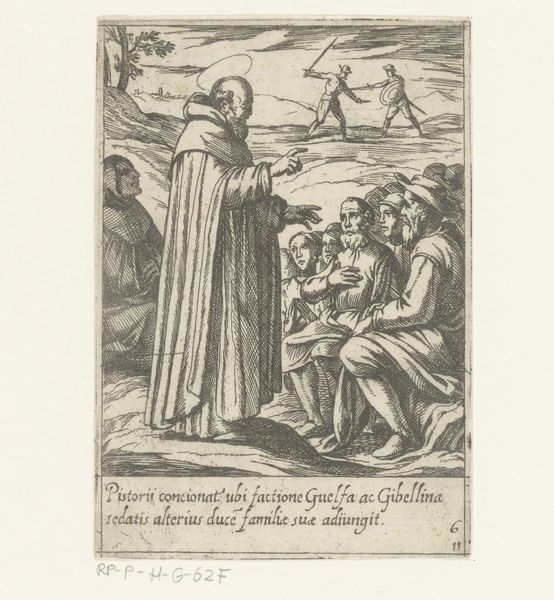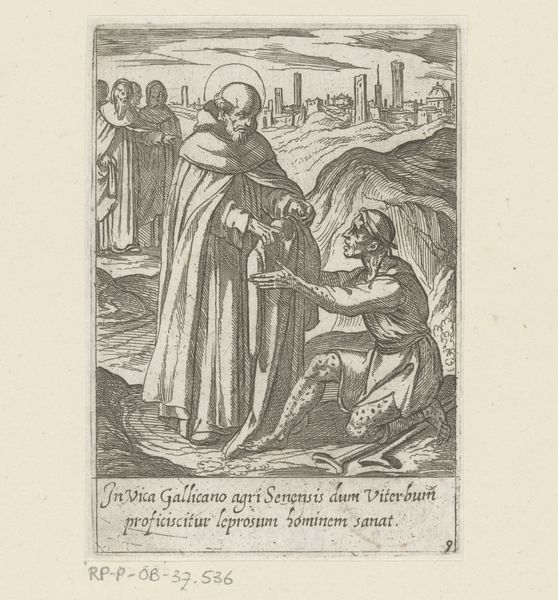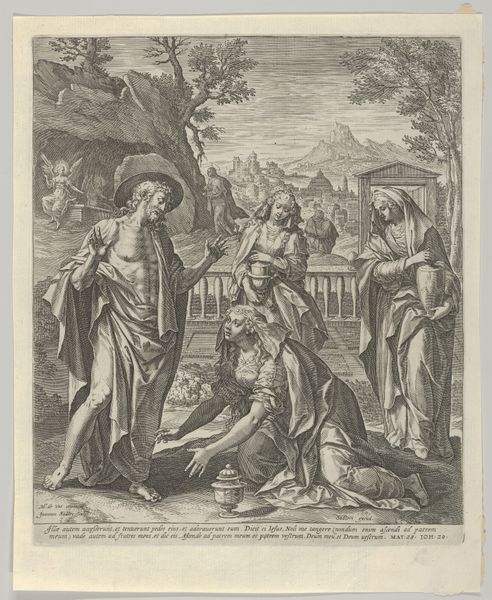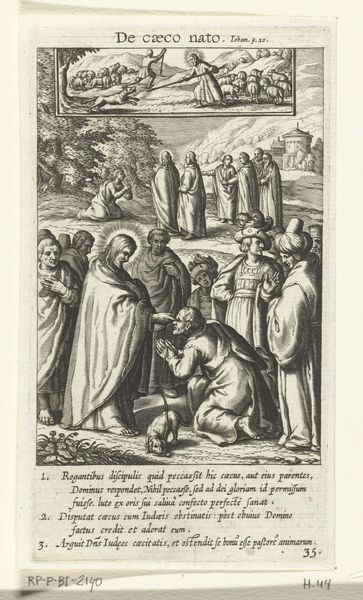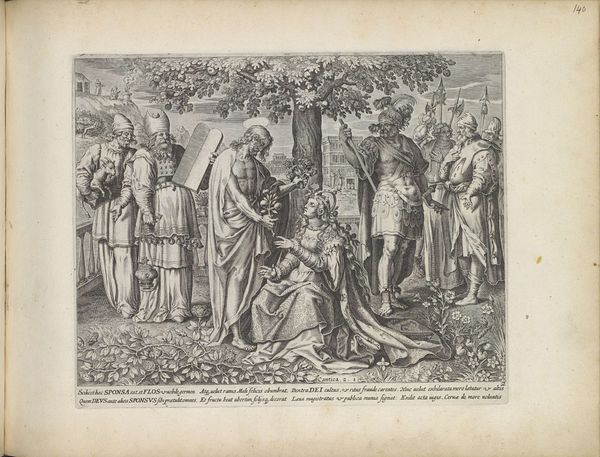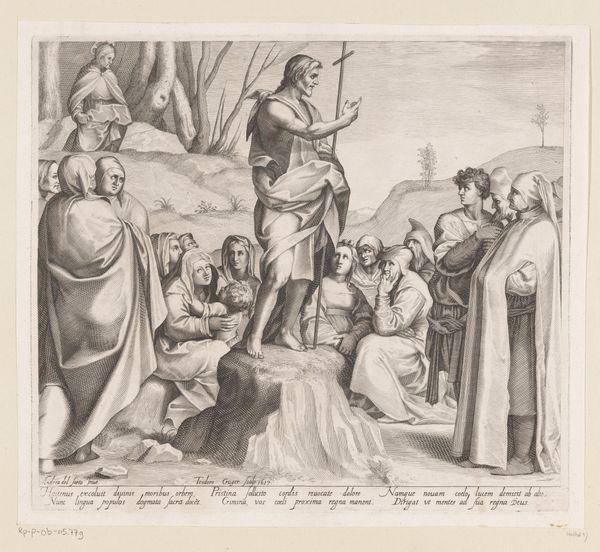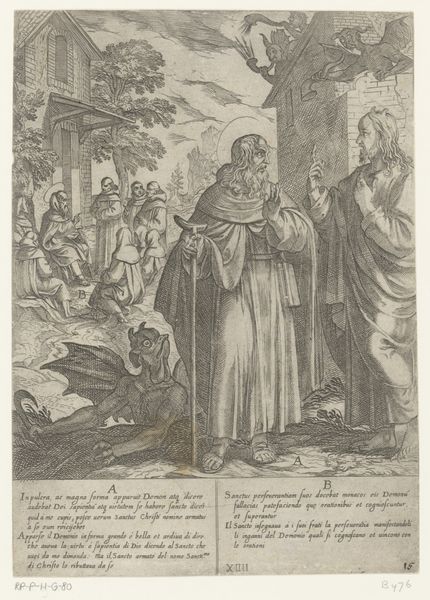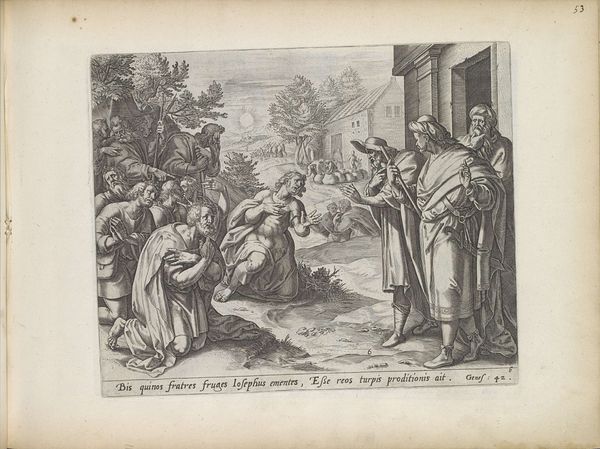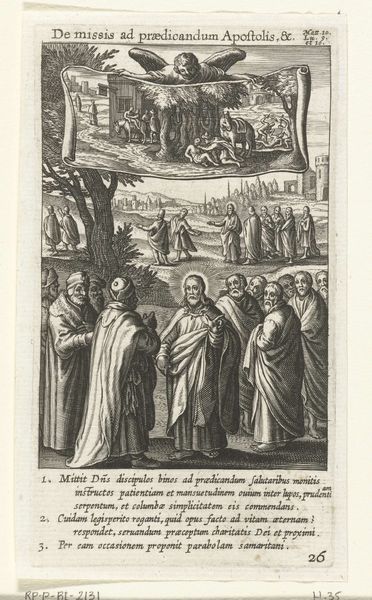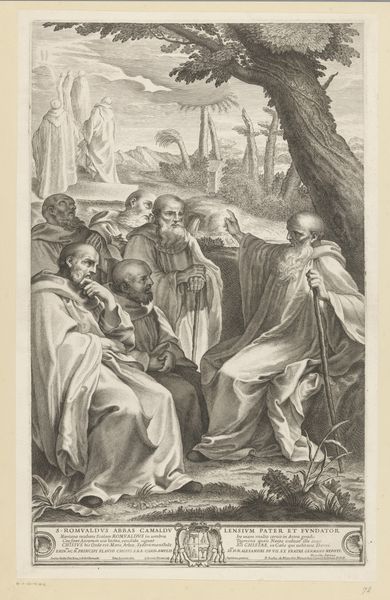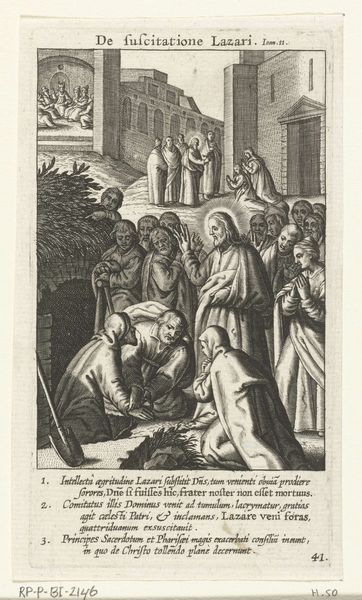
print, etching, engraving
#
baroque
# print
#
etching
#
figuration
#
history-painting
#
engraving
Dimensions: height 115 mm, width 80 mm
Copyright: Rijks Museum: Open Domain
Curator: This piece is titled “The Miraculous Fountain of Saint Phillip,” made in 1591 by Antonio Tempesta. It's a print, a combination of etching and engraving, and resides here at the Rijksmuseum. Editor: It's stark, isn't it? So much happening in such a small space, yet there's a real sense of stillness. The lines are incredibly detailed for an engraving, especially on those robes. Curator: The Baroque style is evident here, particularly in the dramatic rendering of the miraculous event. Tell me more about the "stillness" you perceive. Editor: I think it's the gazes of the crowd. Everyone is directed at the center of the miracle with such quiet reverence, like spectators at a play. Though I do wonder about the implied power dynamics in scenes of miracles – who gets to receive them, and who are simply observers? Curator: That’s a pertinent point. Depictions like these reinforce hierarchies, both divine and social. Here, we see St. Philip portrayed as an almost regal figure, channeling divine power. Do you find the composition effective in conveying that authority? Editor: Absolutely, there is the clear visual separation. Philip's taller and draped in all these robes compared to those he’s supposedly helping. But I also notice the bare feet – an interesting contrast suggesting humility perhaps? Or maybe something about his role as an intermediary. Curator: An intriguing reading. And looking at Tempesta's historical context, it is key to keep in mind the Catholic Reformation. Art was a powerful tool for reinforcing faith and demonstrating the Church's power. Works like this were meant to inspire awe and confirm beliefs in saints' miraculous abilities. Editor: Right, and within that context, something as seemingly simple as the rendering of light takes on a political dimension. Whose stories get illuminated, whose bodies are considered worthy of attention, all of these choices contribute to an argument. It speaks volumes, doesn't it? Curator: Indeed, and in exploring this artwork, considering its place within art history and beyond is just so enlightening. Editor: It is. Thank you for shining some light onto this engraving.
Comments
No comments
Be the first to comment and join the conversation on the ultimate creative platform.
